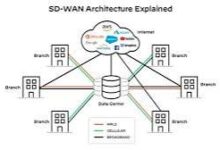127.0.0.1:57573 is Crucial for Developers: Understanding Local Server Communication

Introduction to Local Server Communication
In the ever-evolving world of web development, understanding local server communication is a game-changer. Picture this: you’re deep in your coding zone, making real-time changes to your project. Everything works smoothly until it doesn’t. That’s where 127.0.0.1:57573 steps in as an essential tool for developers.
This address may seem like just another string of numbers and letters, but it holds immense power when creating and testing applications locally. By harnessing the potential of local servers, developers can streamline their workflow and troubleshoot issues more effectively than ever before.
Are you ready to dive into why mastering 127.0.0.1:57573 can elevate your development skills? Let’s explore the fascinating world of local server communication together!
What is 127.0.0.1:57573?
127.0.0.1:57573 is an address you might encounter frequently as a developer working on local applications.
At its core, 127.0.0.1 refers to the local host, which is your computer’s way of saying “me.” It represents your machine in network communications.
The number following the colon, 57573, indicates a specific port on which an application listens for incoming connections. Ports are essential because they allow multiple services to run simultaneously without interference.
When you use this address in your browser or development tools, you tell them to connect back to your system rather than reach out over the internet.
This setup facilitates testing and debugging with speed and ease since changes can be viewed immediately without needing external servers or networks involved.
Benefits of Using Local Server Communication
Local server communication offers several key advantages that enhance the development process. First, it allows developers to test and debug applications in a controlled environment, ensuring that the code runs smoothly before deployment.
Speed is another benefit. When using 127.0.0.1:57573, responses from the local server are nearly instantaneous, reducing latency compared to remote servers.
Security also improves with local setups. Developers can safeguard sensitive data without exposing it over the internet.
Additionally, working locally fosters creativity and experimentation without risk or consequences associated with a live environment.
Collaboration becomes easier as team members can seamlessly share configurations and project files within their local networks. The collective brainstorming benefits everyone involved in the project’s success.
How to Set Up a Local Server for Development
Setting up a local server for development is straightforward. Begin by selecting the right software stack that suits your project needs. Popular choices include XAMPP, WAMP, and MAMP.
Once installed, launch the server application. This automatically starts services like Apache and MySQL, allowing you to run web applications locally.
Next, create a new folder for your specific setup in the ‘htdocs’ directory or equivalent. Place all your project files inside this folder.
Open your web browser and enter “127.0.0.1:57573/your-folder-name” into the address bar to access your project directly from the local server.
Ensure that any configuration settings are adjusted in the php.ini file if you use PHP-based projects.
With everything set up correctly, you can begin coding without delays caused by internet connectivity issues or deployment challenges.
Troubleshooting Common Issues with 127.0.0.1:57573
When working with 127.0.0.1:57573, developers occasionally face obstacles that can be frustrating yet manageable. One common issue is firewall interference, which may block your local server from communicating effectively. Ensure your firewall settings allow traffic through port 57573.
Another frequent concern arises from incorrect configuration of the server software itself. Double-check your setup files for mistakes or typos that might prevent the server from starting correctly.
If you encounter sluggish performance, it could be due to your machine’s resource limitations. Close unnecessary applications and check system resources to free up memory and CPU usage.
Consider checking logs for error messages when things go awry; these often provide insight into what went wrong and how to fix it swiftly. A systematic approach makes troubleshooting smoother and less daunting for any developer using this essential local address.
Best Practices for Utilizing Local Server Communication
Utilizing local server communication effectively requires a few best practices to enhance your development workflow. First, always use consistent port numbers like 127.0.0.1:57573 for projects you frequently access. This consistency streamlines debugging and testing.
Next, leverage tools like Postman or cURL for API calls directed at your local server. These can help simulate requests without needing a live environment.
Incorporate version control into your process, too; it’s essential when multiple developers collaborate on the same project locally. This practice minimizes conflicts and preserves code integrity.
Monitor performance using profiling tools highlighting potential bottlenecks in real-time communication with the server.
Document any configurations or changes made during setup clearly to avoid confusion later on, especially if others will work with the same local environment.
Conclusion
Local server communication is an integral part of the development process. Understanding how to leverage 127.0.0.1:57573 can enhance your workflow and improve efficiency.
By setting up a local server, developers can test applications in a safe environment without risking unintended consequences on live sites. It allows for rapid iteration, debugging, and testing of functionalities before deployment.
Embracing best practices around this concept streamlines projects and may help prevent common issues that arise during development.
As you continue to explore local server communication, remember that mastering tools like 127.0.0.1:57573 will empower you as a developer and elevate the quality of your work.





